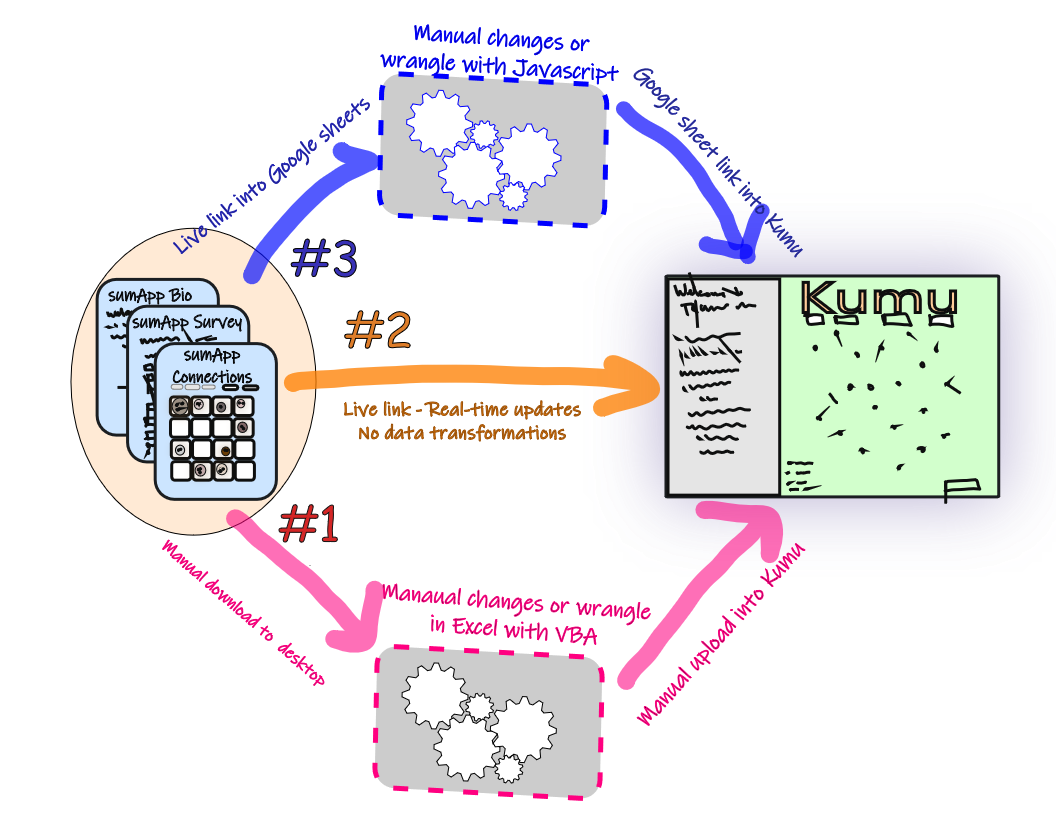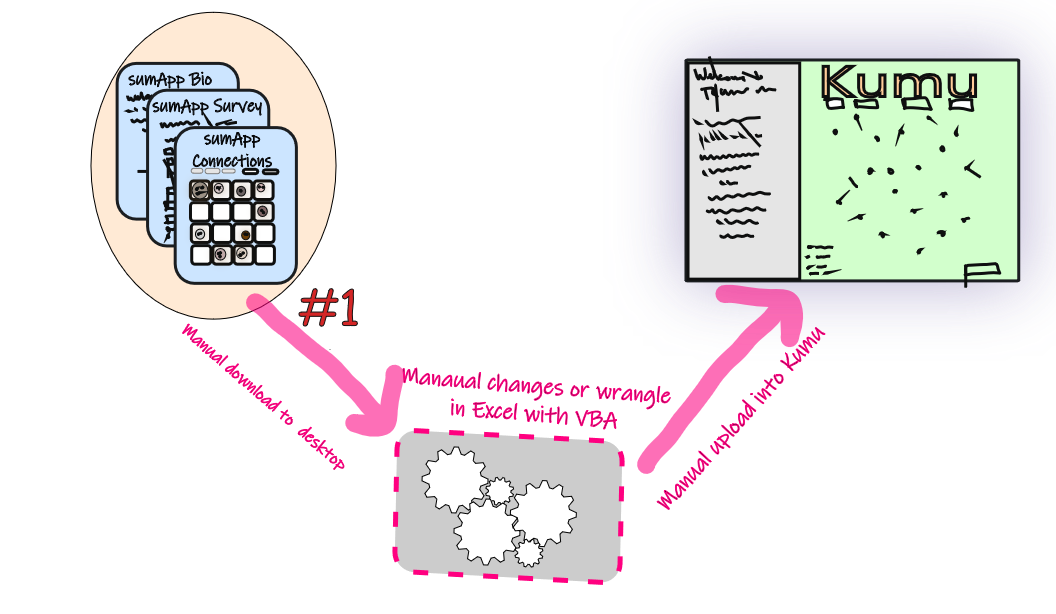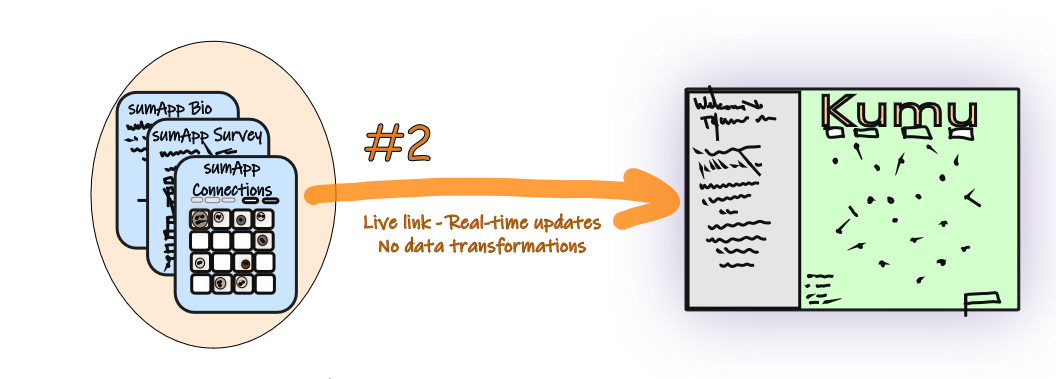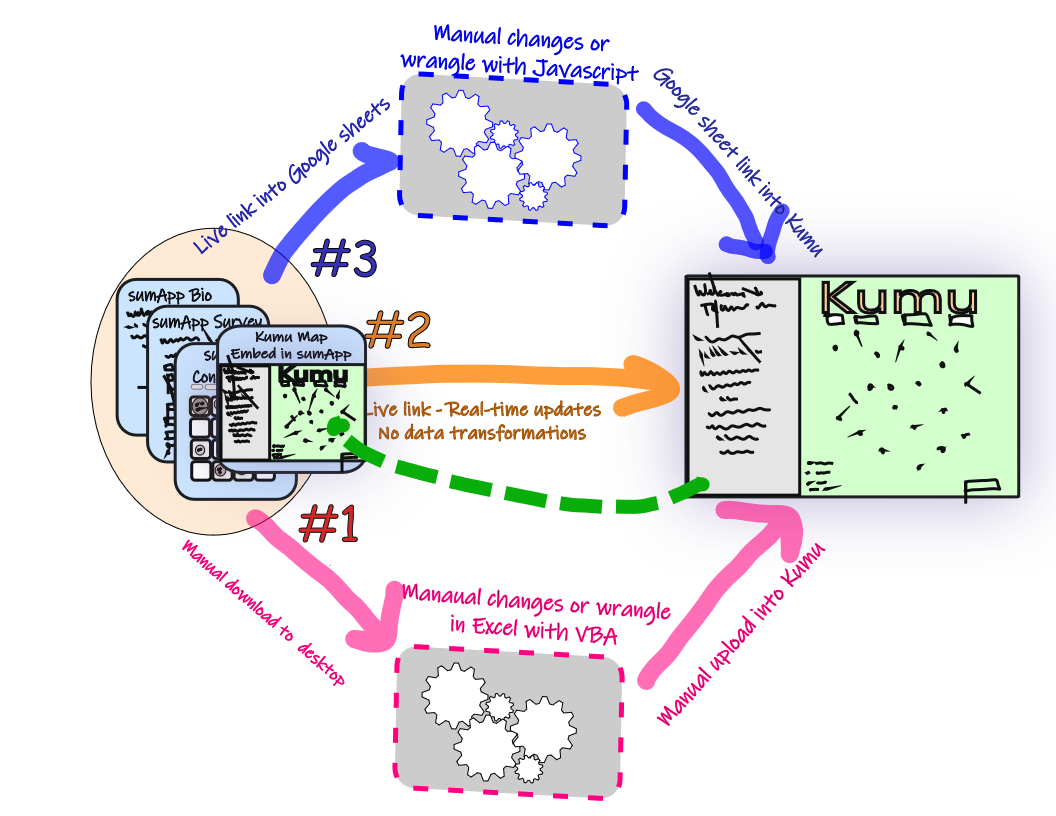Understanding Your Data Flow Options
sumApp is a tool designed to GATHER your network data in an easy,
user-friendly platform. Once you have your data coming in, you need to
get it into Kumu so that you can visualize and share it. There are 3
basic means of migrating your data into Kumu.
The Three Options

1) Download to Desktop - Upload to Kumu

2) Live Link into Kumu

3) Live Link into Google Sheets - Then Google Sheets Link into Kumu


Note that sumApp was designed to enable what we call 'evergreen' data - meaning, once members input information about themselves and their relationships to one another, they don't ever have to input that info again. All they need to do to keep the map current is to share info about new members who they didn't see the last time they were in sumApp, update existing connections to reflect changes in their relationships, and tweak their own survey/profile info if it has changed.
This means there can potentially be an ongoing flow of data from sumApp into Kumu. Methods 2 and 3 below move the data in real time, keeping the Kumu map current. Method 1 requires periodic manual updating if you want your map to be up-to-date over time.
The Three Options
There are generally three ways of getting your data from sumApp into Kumu - which you choose will depend on your context. Click on the headers to read more about each option.
1) Download to Desktop - Upload to Kumu
This is how sumApp began. The old Download then Upload routine. It still has it's uses, but most of us no longer do it this way.
2) Live Link into Kumu
This is quick and clean, and the least likely process to give you data-flow headaches. All changes made in sumApp (whether to survey & connection options or to people adding connections) flow right into Kumu - within an hour at most - with no need for anyone to do anything.
3) Live Link into Google Sheets - Then Google Sheets Link into Kumu
This approach requires advanced data-flow skills, but it's great when you need to combine multiple data-sets!
Finally - Embed Map into sumApp Map Tab
Once you have a prototype map set up in Kumu, with data flowing in, you have the option of embedding the Kumu map into the sumApp 'Map' tab. This enables your network members to watch the map get filled in over time, let's them see what is happening with their data, enables them to notice if they've missed someone and easily switch to the 'Connections' tab to update it.
We encourage you to embed the map into your sumApp interface as soon as possible, to help encourage engagement.
Upcoming Events
To be notified of our online events.
Related Articles
Data-Flow Option #3) Link Into a Google Sheet then Link Google Sheet into Kumu
If you want to incorporate data gathered from sources other than sumApp, or make changes to your sumApp data (such as shortening questions so they display better in Kumu), this is the way to go. But you'll need to know some google sheet formulas or ...Data-Flow Option #2) Live Link from sumApp to Kumu
This is by far the simplest and most popular option among sumApp users. Read about how to set up you live link hereData-Flow Option #1) Download to Desktop - Upload to Kumu
When we first developed sumApp, this was the only way to get data into Kumu. We'd download the 2 spreadsheets - an 'elements' sheet and a 'connections' sheet. Then we'd load those sheets into Kumu. This option isn't very popular now, because if you ...Turning Data-Flows Into a Practice
Moving data around is by far the most confusing, time-consuming, mind-numbing part of data-visualization. It's the part of this whole mapping process with the most potential to drag you down a nasty rabbit-hole and cause you to beat your head against ...Introduction to The sumApp Data Management Tab
The sumApp Data Management Tab enables you to: Export your data in various formats Set up Time Tags in your project, so that you can track changes in your network over time Import connections from one project into another if: You have a Tier IV ...